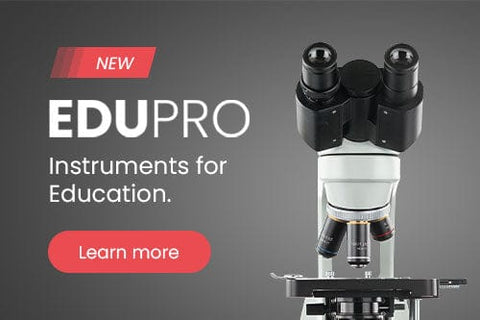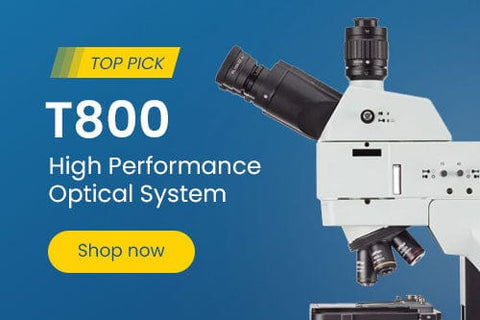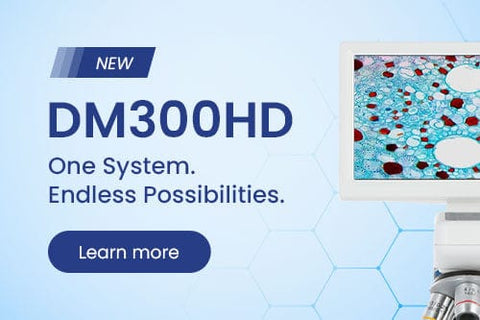- Microscopes
- Cameras
- Lab Supplies & Equipment
- Shop By Brand
- Lab Supplies by Category
- Analyzer Consumables
- Balances
- Bags
- Beakers
- Bench Scale Bases
- Bottles
- Bottletop Burettes
- Bottletop Dispensers
- Boxes
- Blank Microscope Slides & Cover Slips
- Blood Collection
- Caps
- Carboys
- Centrifuges
- Centrifuge Tubes
- Cold Storage
- Containers
- Cryogenic Vials
- Culture Tubes
- Cylinders
- Dispensers
- Digital Dry-Baths
- ESR Products
- False Bottom Tubes
- Flat Bottom
- Funnels
- Gel Documentation
- Glassware
- Glass Test Tubes
- Histology
- Homogenizers
- Hotplates-Stirrers
- Inoculation Loops and Spreaders
- Liquid Handling Products
- Manual-Electronic Pipettors-Pipettes
- Microscope Slides
- Overhead Stirrers
- Pipette Controller (Serological Filller)
- Pipette Tips
- Plastic Test Tubes
- PCR Tubes, Strips & Plates
- Racks
- Repeater Pipettor
- Rockers
- Rotary Evaporators
- Serological Pipettes
- Shakers
- Spectrophotometers
- Syringe Tips
- Sample Tubes
- School/Classroom Supplies
- Screwcap Test Tubes
- Self-Standing
- Test Tube Racks
- Test Tubes & Vials
- Transport & Storage Tubes
- Thermal Mixers
- Transfer Pipets
- Urinalysis
- Vacuum Pumps
- Weighing Dishes
- Lab Equipment
- Balances
- Bench Scale Bases
- Centrifuges
- Digital Dry-Baths
- Gel Documentation
- Homogenizers
- Hotplates-Stirrers
- Overhead Stirrers
- Pipettors
- Rockers
- Rotary Evaporators
- Shakers
- Serological Pipettes
- Spectrophotometers
- Thermal Mixers
- Vacuum Pumps
- Liquid Handling Products
- Manual-Electronic Pipettors-Pipettes
- Pipette Tips
- Racks
- Pipette Fillers-Controllers
- Repeater Pipettor
- Syringe Tips

Cost effective products and solutions designed to improve laboratory efficiency, safety and results.
SHOP BENCHMARK SCIENTIFIC >
- Slides & Accessories
- Slides
- Cameras
- Illuminators
- Adapters
- Eyepieces / Objectives
- Bulbs
- Magnifying Lamps
- Monitors and Tablets
- View All Categories
- Adapters
- DSLR Adapters
- USB Camera Adapters
- Ring Light Adapters
- Power Adapters
- Barlow Lens
- Books & Experiments Cards
- Bags & Cases
- Bags
- Cases
- Cameras
- Circuit Board Holders
- Cleaning Kits
- Condensers
- Darkfield
- Phase Contrast Kits
- Polarizing Kits
- Dust Covers
- Eye-Guards
- Eyepieces
- 20mm
- 23mm
- 30mm
- 30.5mm
- Filters
- Microscope Filters
- Illuminator Filters
- Fluorescence Kits
- Conversion Kits
- Filter Cubes
- Focusing Racks
- Fuses
- Illuminators
- Bulbs
- LED Illuminators
- Fiber Optic Illuminators
- Fluorescent Illuminators
- Ring Lights
- Stand Lights
- Goosenecks
- Gooseneck Attachments
- Immersion Oils
- Loupes
- Magnifying Lamps
- Clamp Lamps
- Desktop Lamps
- Rolling Stand Lamps
- Mechanical Stages
- Monitors and Tablets
- Calibration Slides & Stage Micrometers
- Stage Warmers
- Stain Kits
- Stands
- Articulating Arm Stands
- Boom Stands
- Table Stands
- Tweezers
- Other Accessories
- Shop By Industry
- Shop By Industry
- Botany
- Agronomy & Forestry
- Horticulture
- Phytopathology
- Chemistry
- Biochemistry
- Biotechnology
- Cannabis
- Pharmaceutics
- Consumables
- Beer & Wine
- Cosmetics
- Food & Beverage
- Electronics
- Circuit Boards & General Electronics
- Mobile Phone Repair
- Semiconductors & Wafers
- Environmental
- Asbestos
- Ecosystem Research
- Mud Logging
- Soil Treatment
- Water Treatment
- Forensics
- Ballistics
- Fingerprint Analysis
- Genetic Identification
- Hair & Fiber Analysis
- Handwriting Analysis
- Industrial
- Aerospace
- Automotive
- Dental Lab & Production
- Glass Industry
- Industrial Inspection
- Mechanical Parts
- Paper Industry
- Petrochemical
- Plastics
- Printing Industry
- Quality Assurance & Failure Analysis
- Textiles & Fibers
- Tool Making
- Wood Production
- Jewelry & Gemology
- Engraving
- Gemology
- Jewelry Repair
- Stone Setting
- Watch Repair
- Hobby
- Coins & Collecting
- Stamps
- Modeling & Assembly
- Sculpting
- Repair
- Telescopes
- Metallurgy
- Archaeology
- Geology
- Mining
- Petrology
- Medical & Microbiology
- Anatomopathology
- Bacteriology
- Biochemistry
- Cell Culture
- Cytology
- Dental Microbiology
- Dermatology
- Dissection
- Gout & Rheumatology
- Hair & Fiber Analysis
- Hair Transplant
- Fluorescence
- Hematology & Live Blood Analysis
- Histopathology
- Mycology
- Medical Devices
- Microsurgery
- Neuropathology
- Oncology
- Parasitology
- Pathology
- Semen Analysis
- Virology
- Veterinary & Zoology
- Breeding & Semen Analysis
- Entomology
- Fecal Smears & Floats
- Marine Biology
- Ornithology
- Veterinary Medicine
- Zoology
- Shop By Industry
- Students
- Telescopes
- Buy With Prime
- Sale
- Compound Microscopes
- Shop By Brand
- AmScope
- Euromex
- Omax
- Shop by Head Type
- Binocular
- Monocular
- Trinocular
- Multi-head & Training
- Shop By Specialty
- Brightfield
- Darkfield
- Phase Contrast
- Inverted
- EPIfluorescence
- Polarizing
- Digital Integrated
- Metallurgical
- Shop By Application
- Education
- Research
- Veterinary
- Compound With Digital Head
- Shop Best Sellers
- Shop All Compound
- Stereo Microscopes
- Shop By Brand
- AmScope
- Euromex
- Shop By Objective Type
- Fixed Power
- Zoom Power
- Single Lens
- Common Main Objective
- Shop By Stand Type
- Articulating Arms
- Boom Stands
- Gooseneck Stands
- Table Stands
- Other Stands
- Shop By Head Type
- Binocular
- Monocular
- Trinocular
- Simul-Focal
- Shop By Industry
- Video Inspection
- Industrial Inspection
- Microscope Heads
- Shop Stands
- Articulating Arm
- Boom Stands
- Table Stands
- Stereo With Digital Head
- Shop Best Sellers
- Shop All Stereo
- Specialized Microscopes
- Digital Microscopes
- Kids, Student Microscopes
| AmScope Blogs
5 Reasons Why Digital Microscopes Are Great for Upper-Level Students
Digital microscopes use similar optics as traditional microscopes, but they also include the addition of a digital camera. This allows the images to bypass the need for an eyepiece and be displayed directly onto a monitor for instant, up-close results. Upper-level students benefit from the use of these types of microscopes as they provide a more precise view of the observations and they are a great way to advance the skill sets of budding scientists. Below are five ways in which digital microscopes are an undeniably great addition to an upper-level student lab environment.

-
Built-In Cameras
One of the best educational features of digital microscopes is their ability to take pictures of the images and save them for later analysis. For instance, students can record hundreds of images of subjects, ranging from plant cells to trace amounts of fibers to insect parts and save them to identify and evaluate at a later time. This helps streamline the lesson by clustering the microscope use into one segment, allowing for a longer discussion period post-observation, where students can share hypotheses and ideas. It also enables students to compare and contrast images down to the most minute details, which can be more difficult or even impossible when using equipment that lacks microscope camera capabilities.
-
Great Magnification
The impressive magnification power of a digital microscope allows scientists to gain up-close access to the world of cells and microbes. The same large screens that enable them to view colonies and communities of microorganisms with ease can give entire classrooms a chance to see the same slide at once. This not only makes lessons more efficient, so more time can be spent on discussion and learning, but it also ensures that all students are viewing and analyzing the same scene, cutting down on user error due to bumped slides or accidental focus changes.

-
Image Clarity
The use of CCD sensors, also known as charged coupling devices, means that images come out more clearly than ever before. Light-sensitive pixels are used to capture images at speeds that can be controlled by the user. This can be implemented to increase clarity and even view images in real time, allowing students to capture motion. Digital microscopes can be used to display 3D images, so students can explore even more of the world that can’t be seen by the naked eye, and probe into it in greater depth.
-
Potential for Collaboration
High schools and universities are becoming increasingly digital communities. The same technology that allows an entire classroom to instantly view and save images for comparison can also be used to send images across the globe. Long gone are the days of snail mail classroom pen pals–the information age has ushered in limitless potential for sharing ideas with students from vastly different backgrounds, all in a split second. This type of collaboration allows for a wide range of information to pass between classrooms and can also teach the value of cross-cultural exchange.
-
Fosters Interest in STEM
When students see how much more of the world is opened up to them through the use of digital microscopes, it can plant the seed of a lifelong interest in the sciences. Science, Technology, Engineering and Math, referred to collectively as STEM in the educational community, are fields often underrepresented in high schools, but extremely valuable for the advancement of technology and medicine. The innovation required to excel in these fields begins with curiosity at a young age. Upper-level students who are already predisposed to seek out knowledge can tap into that excitement when the equipment in their schools helps them challenge what they already know.

A Key Tool for Modern Learning
The vast potential of digital microscopes can stoke a student’s interest in a new field or help them find focus in subjects they already love. The clarity and magnification power of advanced technology is an exciting educational tool for any educator. Students can also learn how studying and sharing images of microenvironments can lead to expanding their world when they are given the opportunity to share their results with peers in different locations. More than just a new way to see a microscope slide, digital microscopes can give upper-level students myriad views into potential fields of research as well as the world around them.
Free Shipping on orders $149+
Same day shipping for orders within the contiguous U.S.
Easy Returns
Hassle-free 30-day return policy. 100% satisfaction guarantee.
Quality Products
5-year warranty on AmScope microscopes.
Got a question?
Speak to our team of experts and find the products you need.
















